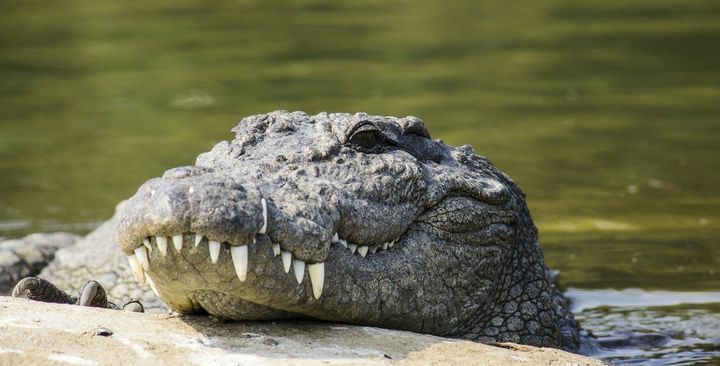
AHMEDABAD/VADODARA — A crocodile that strayed into a Khodiyar Mata temple in Gujarat’s Mahisagar district was Sunday rescued even as villagers delayed the forest department operation by claiming the reptile’s presence was an auspicious one, a senior official said.
Khodiyar Mata, the family deity of the Patel community in the state, is often depicted in religious literature as riding on a crocodile.
For the latest news and more, follow HuffPost India on Twitter, Facebook, and subscribe to our newsletter.
A large number of people who had assembled at the Khodiyar Temple in Palla village in Lunwada tehsil offered prayers, conducted aarti and showered vermillion on the 6-foot reptile as it lay near the goddess’ idol, said Lunwada forest department in charge RV Patel.
Mahisagar Deputy Conservator of Forests RM Parmar said the people assembled at the temple delayed rescue operations by around two hours.
“When our personnel reached there to rescue the crocodile, people opposed it. We waited for two hours as we did not want to hurt religious sentiments. However, later, we managed to get the reptile to a nearby pond,” Parmar said.
He said water bodies in the region, including the Mahisagar River, have a sizable number of crocodiles, adding that these reptiles can travel 4-5 kilometres in search of food.
“The crocodile, around four years old, may have entered the temple late night to rest. We rescue around 30-35 crocodiles every year,” Parmar added.
Crocodiles are Schedule 1 animals (provided absolute protection) as per theIndian Wildlife (Protection Act), 1972.